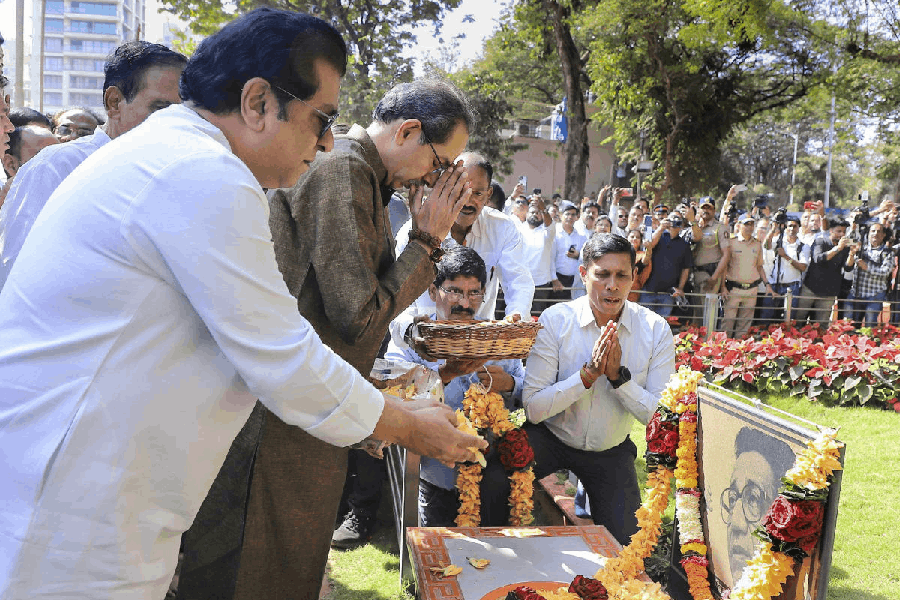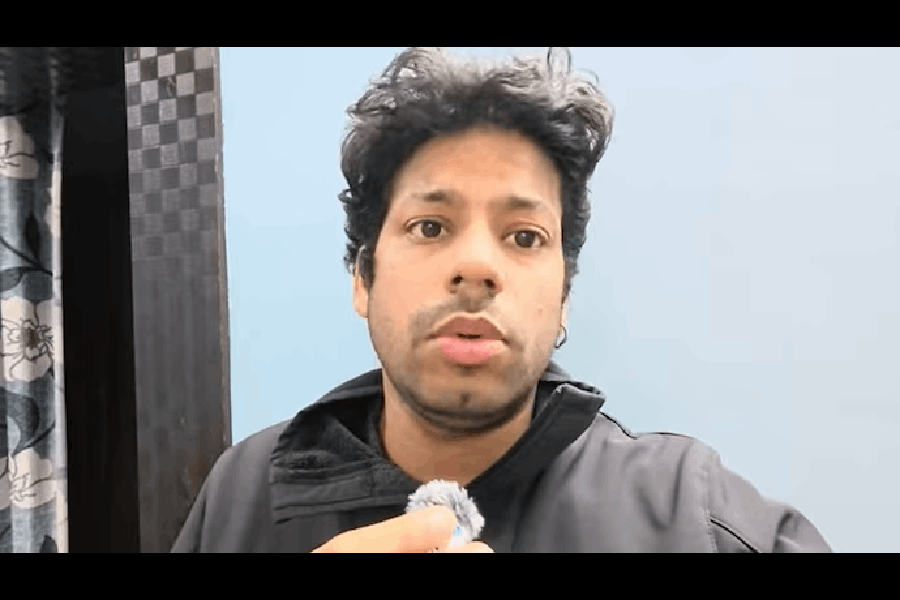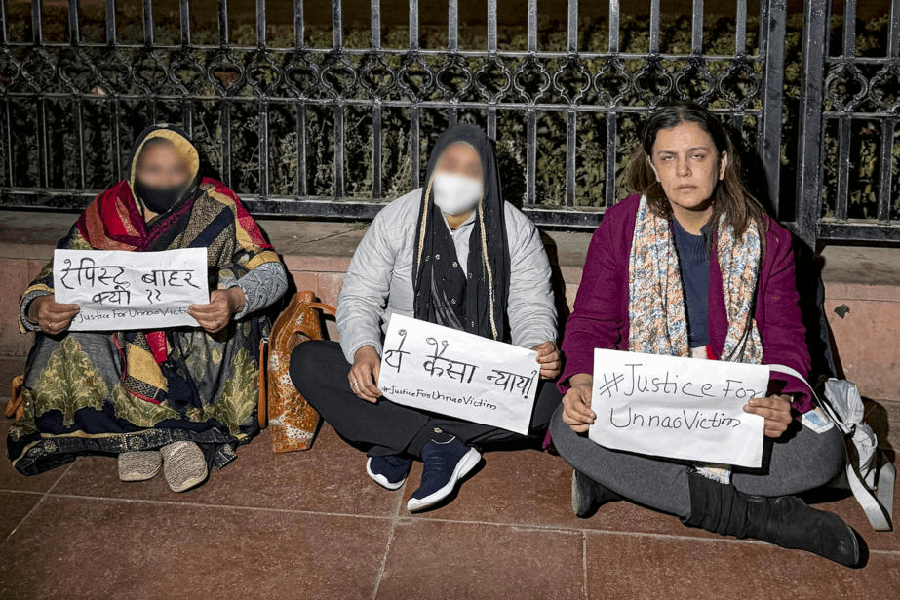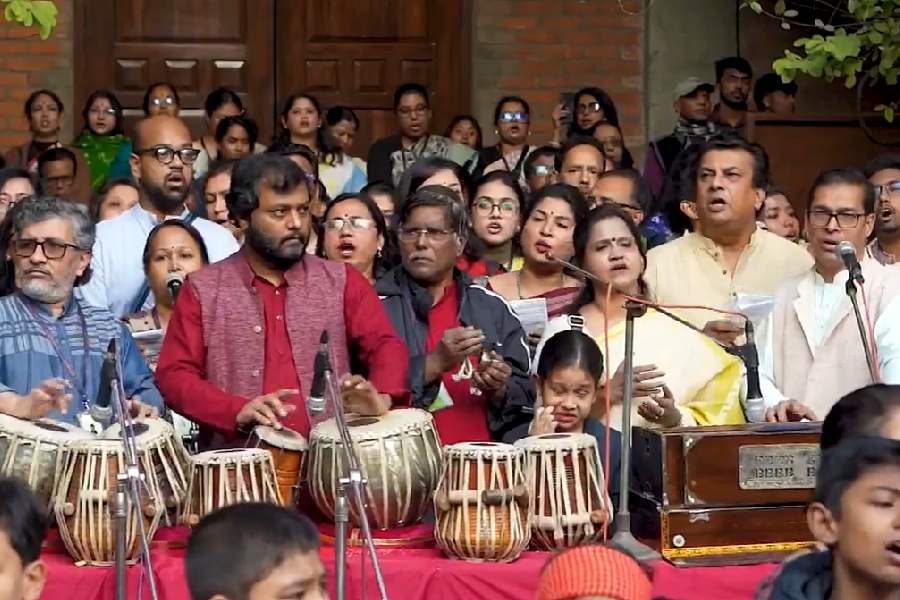 |
| The Shiva temple in Sivasagar, which was robbed of some its antiques recently. Picture by UB Photos |
Monuments and other places of historical importance are no longer safe in Assam. Thieves have laid a siege on most of them to make good with their antique treasures.
Recently, Sivasagar police arrested a group of four thieves who had stolen numerous items from the famous Shiva temple of Sivasagar, built during the Ahom dynasty. Altogether 44 antique brass items, including 23 bells, 10 plates, three pots, six tridents and a statue of a snake were recovered from their possession.
Reports said a team of policemen, led by town sub-inspector Pradip Kumar Choudhury, had arrested the thieves near the Durbar field ? another historical site in Sivasagar, the capital of Ahom kingdom. Surprisingly, one of the thieves turned out to be the ?chowkidar? of the temple.
It emerged that the thieves were robbing the temple of its antiques for a long time after bribing the chowkidar. They used pay him a paltry sum for helping them in their endeavour and sold the loot to a scrap dealer in the Station Charali area of Sivasagar.
Taking into account the huge demand for old and antique items in the market, the value of the recovered goods could touch astronomical figures. The police are investigating the thefts, which could lead them to a huge racket of antique item traders.
Bangladesh is often blamed for orchestrating a ?silent invasion? of the Northeast with ?illegal migrants,? notorious for their expertise in infiltrating the porous border. But the neighbouring country also happens to be one of the highest contributors of revenue to some of these states.
Out of the total 5,099 foreign tourists who visited Meghalaya with valid visas last year, a decisive majority of 3,451 were from Bangladesh. Out of 12,407 foreigners who came to the state the previous year, 8,837 were from Bangladesh.
Statistics available with the state tourism department also revealed that 3,547 Bangladeshi tourists took delight in the scenic beauty of the hill state in 2003. They were among 6,304 foreigners who came to Shillong.
Americans also figure high on the tourist graph, although they are nowhere near the whopping figure of Bangladeshi visitors coming to the state each year. A total of 234 US citizens visited the state last year, 280 the previous year and 155 in 2003.
Next on the list were the Britons with 171, 178 and 124 of its people arriving in the state in 2005, 2004 and 2003 respectively. While 107, 146 and 125 Germans flocked to the state in these three years, Australians, too, figured well on the tourist list with 120, 109 and 157 of them arriving here between 2003 and 2005.
For some reason, the number of Pakistani tourists has not been consistent over the last three years, unlike the nationals of other countries. From just 23 in 2003, an impressive number of 218 people visited the state in 2004 only to go down to just 40 last year.
Although there appears to be no authentic record of the amount of revenue the state has earned from the visiting foreigners, officials in the tourism department say the figure is encouraging.
The department has taken initiatives to promote various activities like trekking, caving, water sports, golf and eco-tourism to attract more foreign nationals.
As the world races to acquire the latest gizmos, Palash Deka of Guwahati toils for old things.
Probably the lone individual collector of antiques in the Northeast, Deka is now contemplating the idea of setting up a museum of these items. He has a project report ready and will submit it to the state government within a couple of days.
Deka said, ?We discard the old for the new, not sparing a second to consider how useful they had been before the latest was invented. I want to conserve these things for posterity so that the coming generation can know how things they take for granted now originated.?
From Swiss-made pocket watches of the 19th century to a newspaper of the country?s first Independence Day, he adds everything to his collection, which numbers about 200 at present.
The vintage cars, bikes and bicycles hold a special place in his collection. Love for old cars for this young collector dates back to his school days.
?It all started with my fascination for a red French Renault of 1948, which my neighbour owned. I dreamt of owning one some day. After many searches, I found a piece with a Punjabi gentleman here and bought it from him in 1994.?
His collection includes nearly 30 cars and some are in the final stages of procurement. These cars include the 1933-made convertible Sunbeam of the Queen of Calcutta, the 1945-made bike used by former chief minister Bimala Prasad Chaliha and the smallest car in the world, the Austin Mini. Among three-wheelers, Deka owns a 1934-made Mazda and 1938-made Royal Enfield.
He narrates an interesting story of the Mazda. ?Once, when its original owner was driving the three-wheeler, a cyclist suddenly came from around the corner. Having never seen such a vehicle before, the poor chap fell off the bicycle in fright.?
The vintage car collector also has a model of world?s first motorbike ? a 1904 belt-driven Birmingham-made Albion. He also owns the world?s smallest bike, 1933 US-made Paratroopers.
Footnote
 |
| Minister Ambika Soni releases the book. Picture by S.H. Patgiri |
With the fame of muga silk reaching the global market, it is the age-old textile industry of Assam which is all set to work the magic. And helping the rich textile industry have a global presence is a well compiled and colourfully designed book titled The Textile Tradition of Assam: Collection of Purbojyoti Sangrahalaya. The book has been published by the Indian Museum, Calcutta.
The book, a monograph complied by Julia Barooah and Goutam Sharma, was released by Ambika Soni, Union minister for tourism and culture, on her recent visit to Guwahati at Srimanta Sankaradeva Kalakshetra. ?The book is an admirable attempt by the authors for making available all the details of the state?s textile industry,? said Soni. ?The book holds the promises of taking the cause of textile industry of the state to a new height.? The book is based on 400 different attires and designs of the state?s vibrant textile industry, preserved at Purbojyoti Sangrahalaya, the textile museum at Kalakshetra.
The author of the book Goutam Sharma, secretary of Kalakshetra and Julia Barooah of Purbojyoti Sangrahalaya had came up with the idea of the book to popularise the rich textile heritage of the state.










